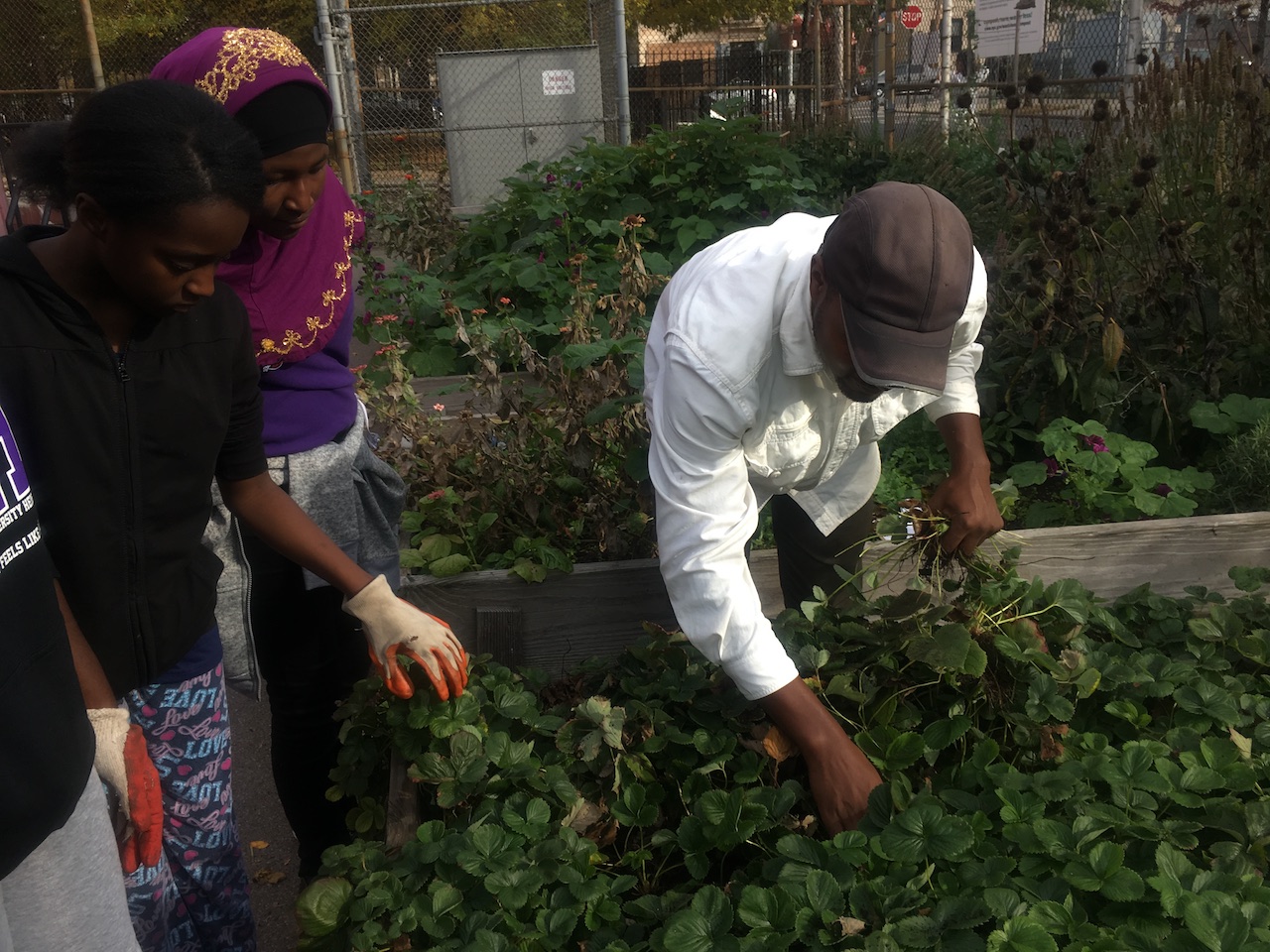
University Heights High School garden is a fount of food and fresh air
Dianely Quezada never went outside much. After school, she usually spent her free time at music club or at home, napping. That was until one sultry summer afternoon in 2016, when she was watering hyssop and picking lettuce at the University Heights High School garden. She started working there for a little pocket money, when the school offers summer gardening work. But that August afternoon, while watering the plants, she heard chirping birds, and rumbling thunder.
She said she heard music in it all.
It was “really peaceful.” That was when Quezada, 16, realized she loved gardening. Since then, she has started drinking rosemary tea, eating more vegetables, and spending as much time as she can at her school’s garden.
While the South Bronx is trying to buck its food desert status, diabetes and unhealthy food still abound, and fresh, healthy options remain scarce. But here, students say the garden has improved their eating habits and changed their perception of plants, while offering a peaceful space that offers a much-desired glimpse of green in their neighborhood.
“It’s good to go outside, and I don’t really do that unless it’s for the garden,” said Quezada. “There’s nothing to do at home.”
Health teacher Ysiant Sanchez often uses the garden, which is funded by two $2000 grants from GrowNYC and Nature Works Everywhere, to show the difference between produce supermarket sold and naturally grown. She conducts taste tests between vegetables from the garden and from the Fine Fare on 149th Street.
“The kids are always surprised,” said Sanchez, referring to the disparate delectability between what’s garden-grown and supermarket-bought. During a comparison of cucumbers, the students “thought it was two different products.”
“It’s a real example of a teaching moment,” said Sanchez. “It’s fun to see them making connections.”
For lead gardener Junior Schouten, 35, it’s obvious why supermarket produce tastes terrible: it mostly comes from abroad, and is therefore picked so early that it can survive the trip to U.S. supermarkets. According to Schouten, the best way to ensure good taste and nutrition is to eat local, seasonal produce.
“We’ve gotten spoiled as a society—we’ve become mini-kings,” said Schouten. “We expect to have tomatoes in February. It’s absurd, ridiculous.”
Schouten has been able to get University Heights High School to eat their vegetables simply because they taste good.
“A lot of children hate tomatoes, but there’s one here that tastes like candy,” said Schouten. “They’re more apt to try it after growing it, which encourages them to try food they wouldn’t normally eat.”
Stephen Ritz, a teacher at Public School 55 and founder of the school gardening nonprofit Green Bronx Machine, agrees. “Children in the Bronx love gardening because it reconnects them to the earth and all that is possible in tangible, hands on manners,” said Ritz, whose previous work in the area includes a stint as Dean of Students at Hyde Leadership Charter School in Hunts Point, where he was known as the “green dean.”
“When we connect our children to nature, we teach them to nurture and when we teach children to nurture, we as a society collectively embrace our better nature,” said Ritz.
For many student volunteers, that connection to the earth is something they can’t find anywhere else. Ashley Polanco, 16, appreciates the strawberries, but if she weren’t a member of the Garden Club, she would spend her days after school “being really lazy,” watching TV. Instead, she said she feels “proud” being outside and watching her seeds grow into plants.
“I would’ve gone crazy seeing gray every day,” said Polanco. At the garden “I’m seeing something green.” Before volunteering at the garden, Polanco said she couldn’t even look at a picture of the outdoors, of a mountain, without getting jealous.
“This is like my little mountain.”

